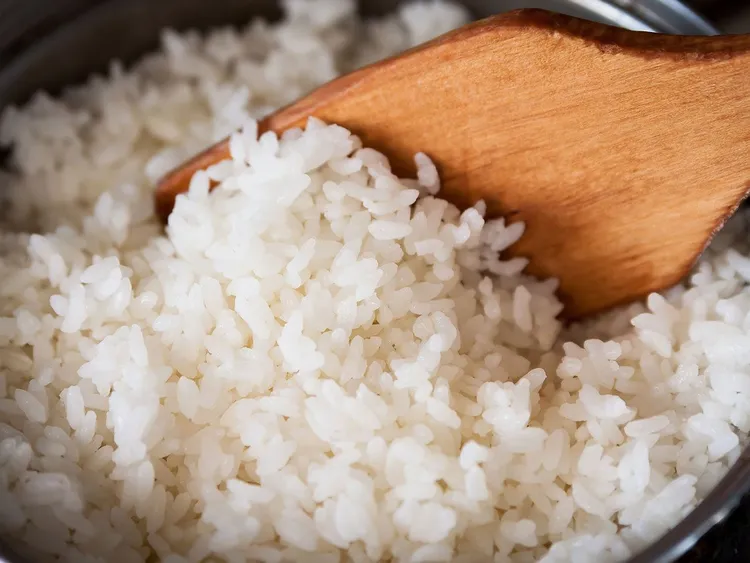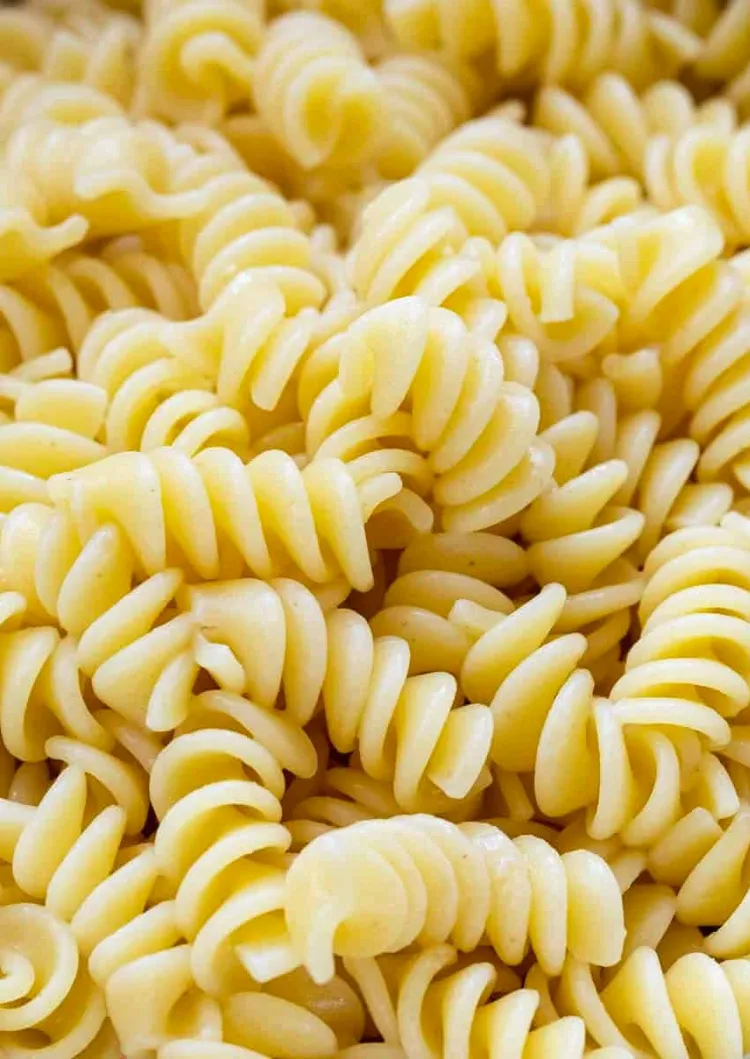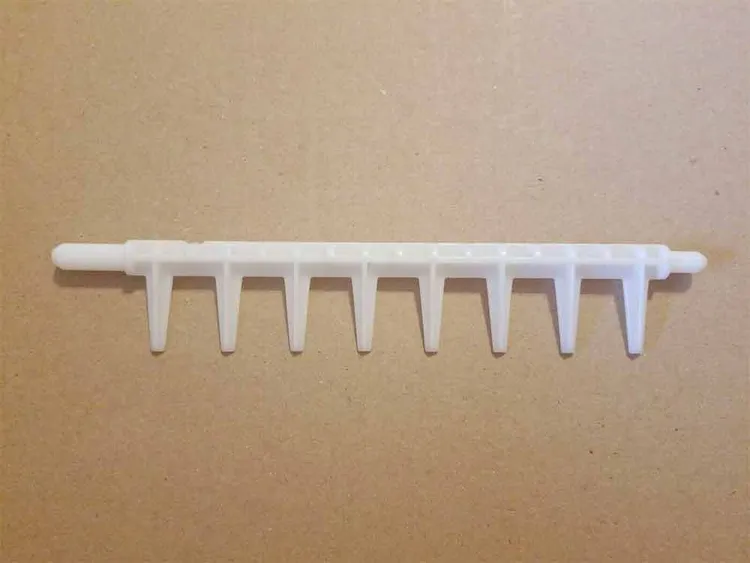Our recommendations are made independently through Research & Testing. We may receive commissions from purchases made via our links.
How to Dry Mint
As tasty as they are, fresh mint leaves don’t last very long. Dried mint, however, can be kept for years. Here’s how to dry mint leaves at home!
Mint leaves offer a ton of benefits that make them worth keeping around the house. But the problem is that fresh mint leaves don’t last long. When stored in the pantry or the refrigerator, mint leaves can be kept only for about a week.
That’s why, if you’re a mint enthusiast, you need to know how to dry mint.
Dried mint leaves are, admittedly, not quite as good as the fresh stuff. However, the upshot is they last far longer. You can keep dried mint in the pantry for years at a time.
Everything you need to know can be found in this guide.
Fresh vs. Dried Mint Leaves: What Are the Differences?
Once the fresh mint leaves are dried, they will lose a small portion of their herbaceous, grassy taste. But you shouldn’t worry about this too much if you’re after the signature minty flavor. The family of chemicals responsible for it — terpenes — is quite heat-stable. Dried mint leaves will still retain it.
As a matter of fact, once the leaves’ water content is removed, the terpenes become more concentrated and potent. This makes dried mint a “stronger” spice compared to fresh.
How to Substitute Dried Mint for Fresh
You can substitute dried mint in place of fresh. However, because dried mint is more concentrated, the amount has to be reduced.
For every tablespoon of chopped, fresh mint, you should substitute in a teaspoon of dried mint.
Are Dried Mint and Dried Mint Tea Leaves the Same?
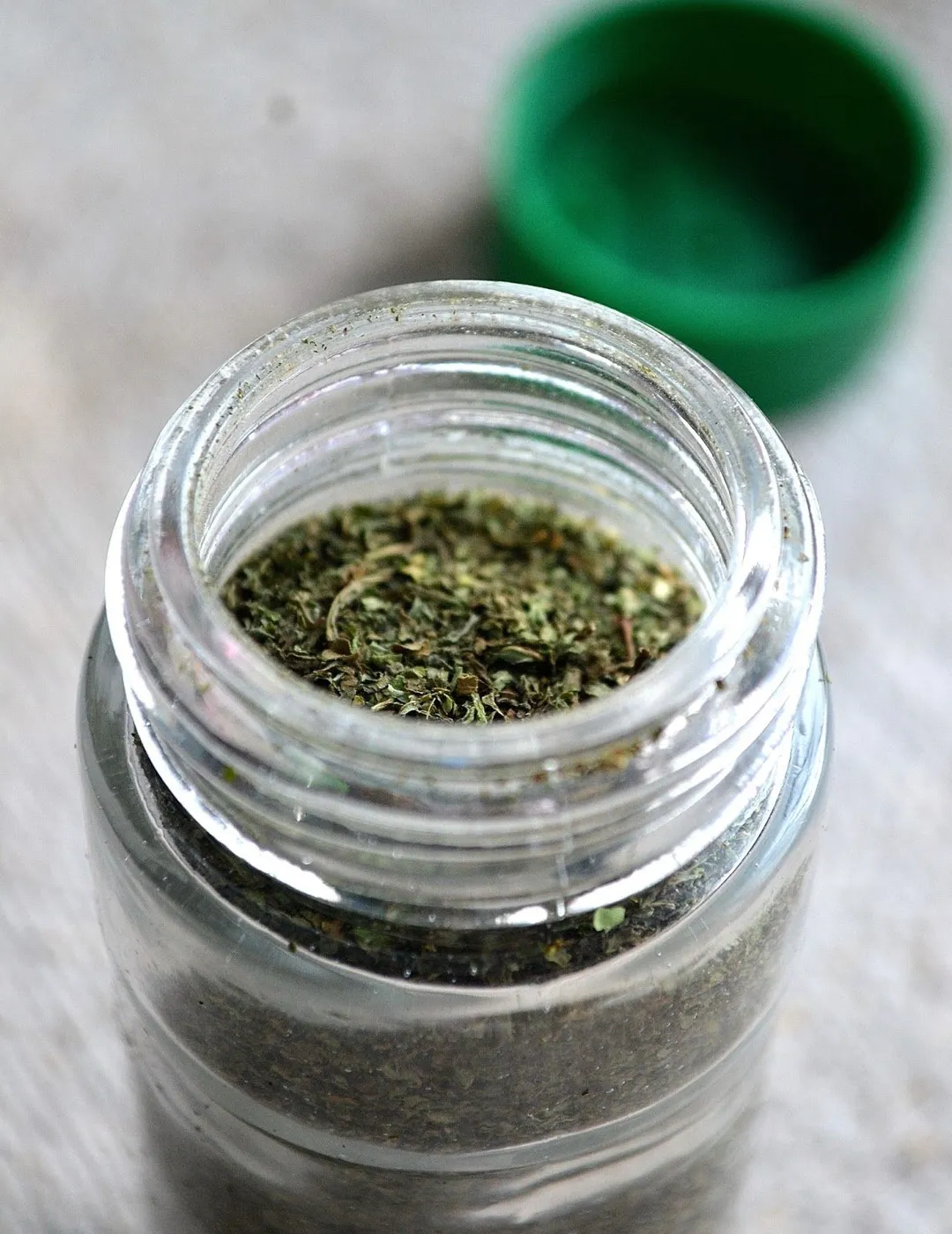
We have seen a few guides that point to dried mint tea leaves as an acceptable substitute for fresh or dried mint. This often isn’t the case, however, and we do not recommend you to use them interchangeably.
The type that is often grown for culinary use is spearmint while the one used for tea-brewing is peppermint. Despite sharing the same ancestry, the two plants are completely unique in terms of flavor and scent.
Spearmint’s taste is derived from a chemical called carvone. It gives spearmint its signature minty flavor, but is quite delicate and “sweet.” Its delicacy is the reason why spearmint is preferred in cooking. It doesn’t overwhelm the other flavors in your recipe, serving more as a stagehand than the star of the dish.
On the other hand, the taste of peppermint comes from a higher concentration of menthol. Menthol flavor is much more pronounced and “cooler” than carvone. As a result, peppermint is often used for teas, baking, and confectioneries rather than cooking.

So, be very careful not to make this mistake. It can definitely ruin your recipe.
The Best Ways to Dry Mint
There are three methods that you can use to dry mint leaves. You can let them dry naturally, in the oven, or with a food dehydrator.
The first method — natural drying — is the easiest, most cost-effective, and requires no electricity. However, it also takes the longest. The principle is simple: hang up the bouquet of mint leaves somewhere cool, dry, and well-ventilated. Over the course of a week or two, the leaves will dry out on their own.
The oven will work much quicker than letting the mint dry naturally. You only need about an hour or two. Plus, since every kitchen nowadays is stocked with an oven, it’s the most accessible method for most.
But since the oven isn’t designed specifically for drying herbs, it’s easy to “overcook” and burn the mint. So, pay extra attention to the state of the leaves as they dry.
Lastly, if you have a food dehydrator at home, it is the safest, most effective way of drying mint (and just about anything else). It can take several hours, but this dedicated dehydrating machine tends to turn out the best-quality dried foods.
The disadvantage of this method is that not everyone has a food dehydrator. It is a niche appliance and can be expensive as well.
How to Dry Mint Leaves
Before they are dried, mint leaves must be rinsed to remove dirt residues and bacteria. This step is especially important if you’re going to dry mint the natural way; the leaves won’t be subjected to sterilizing heat.
Unwashed fresh mint carries a lot of risks. It has been linked to an outbreak of Shigella in Denmark, which sickened more than 40 people.
Washing is fairly simple. Just put the fresh leaves into a bowl, rinse, and carefully scrub the dirt off.
After that, do your best to dry them. Put the wet leaves into a salad spinner if you’ve got one. Then pat them dry of any excess moisture and your mint will be ready to go.
1. Dry Mint Leaves Naturally
You should only use this method if you live in a place with a warm, dry climate. Cold or humid weather will encourage the growth of mold.
Gather all of the mint sprigs into a bouquet after you finish drying them. Use a rubber band or a cotton string to tie all of the stems together.
Hang the bouquet of mint upside down somewhere in your home that will stay cool, dry, and get plenty of air. The mint bouquet shouldn’t come into direct contact with sunlight.
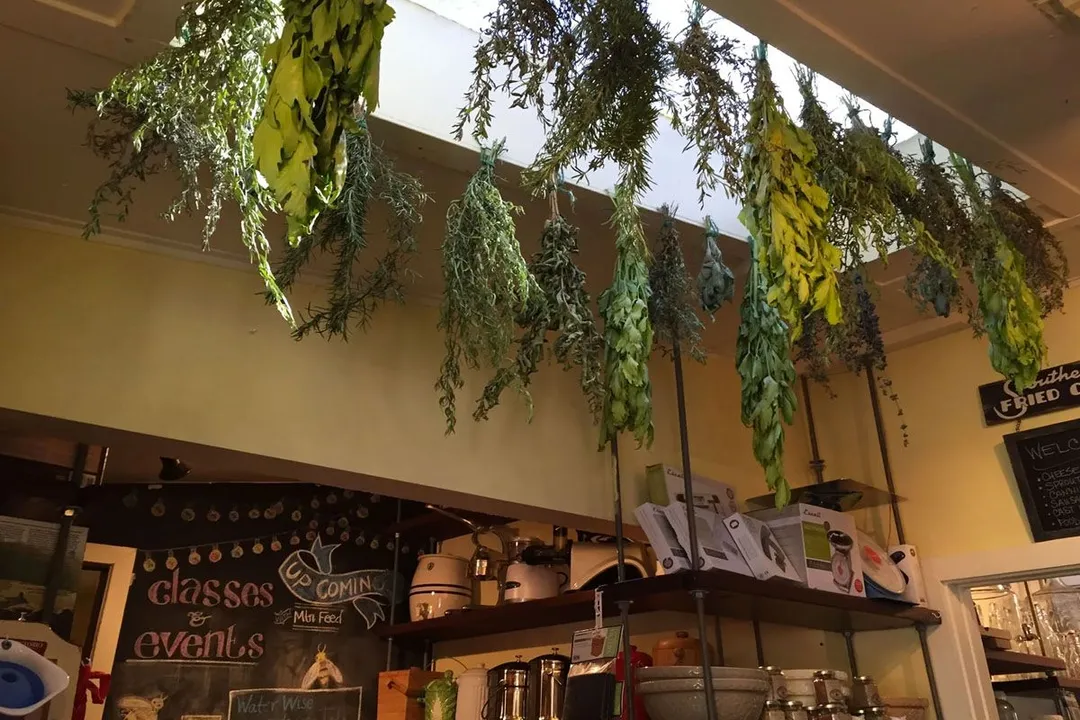
Let it stay there for a week or two. When the leaves wilt and become crumbly to the touch (they come apart easily), the mint can then be taken down.
Separate the leaves from the stems and gather them into a glass jar. Stored in this manner, the dried mint leaves will easily last for a year or two.
Can I Dry Anything Else With This Method?
Air drying is the oldest trick in the book and can be used to dry just about anything.
You can use this exact procedure to dry other herbs. In our guide on how to dry oregano, the steps to dry it naturally aren’t any different. The same will also go for drying parsley or for drying rosemary, if you ever feel the need.
Besides herbs, natural drying is also the best method to dry peppers.
2. In the Oven
After washing the plant, remove the leaves from the stems.
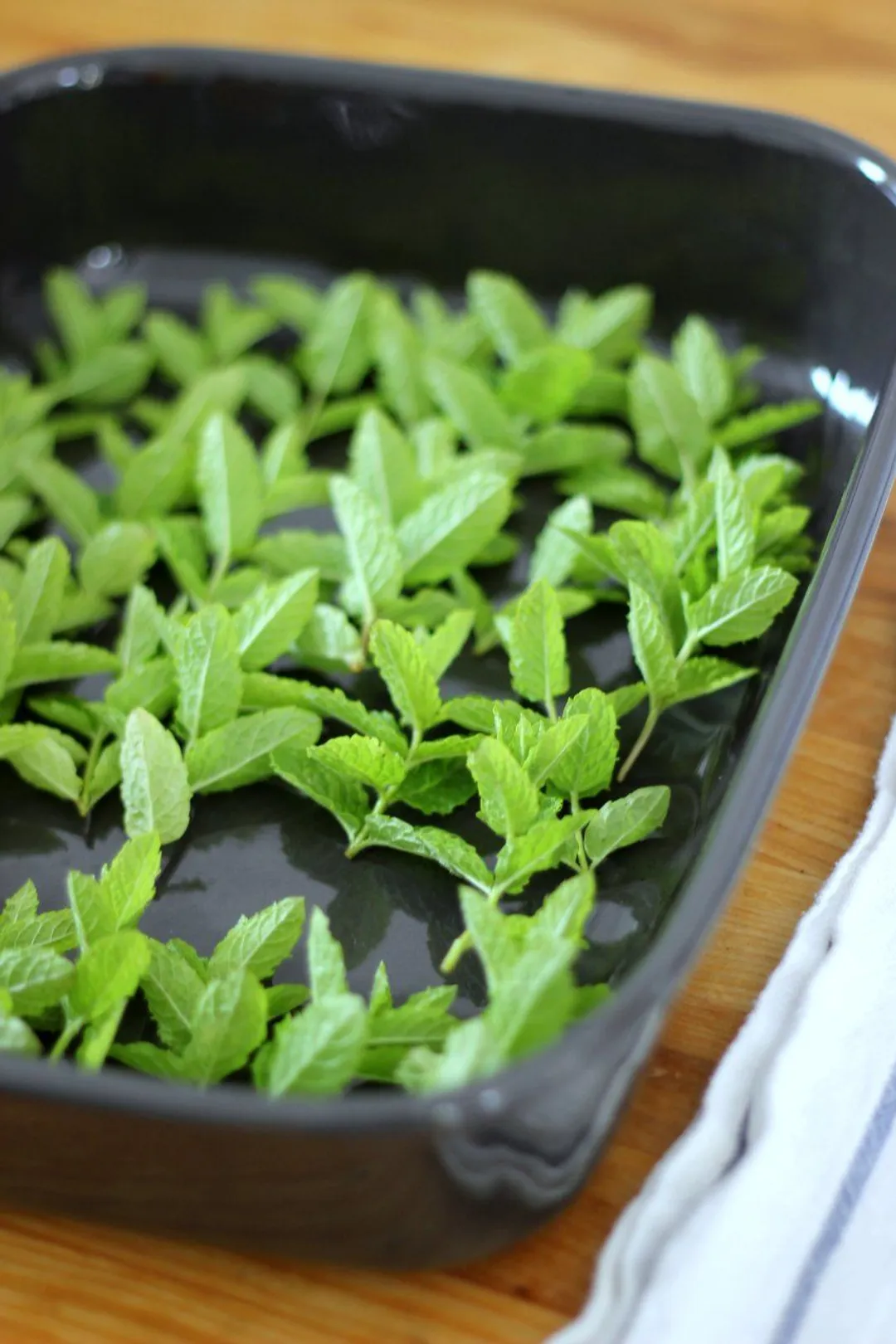
Arrange the leaves on a parchment paper-lined baking sheet. Space them out and don’t let them touch one another. Don’t layer them, either. Proper spacing will improve airflow and increase the drying rate.
Preheat the oven to the lowest temperature available. Depending on the model, this will be between 170°F and 200°F. The best temperatures for drying are between 170°F and 180°F.
Once the oven is up to temperature, place the tray of mint inside. Bake for an hour or two. Check on the mint periodically. If they are still not sufficiently dried (not crumbly enough), bake for another hour or until they are ready.
Store the dried mint in a glass jar after taking them out.
Can I Dry Anything Else With This Method?
Quicker than natural drying and more accessible than a dehydrator, the oven is the go-to drying method for most people. You can leverage your oven to dry basil, for example.
Many sensitive herbs can also be dried fairly effectively with the oven. You can find our own guides on how to dry thyme with the oven, as well as how to dry cilantro.
3. In the Food Dehydrator
Take the leaves off of the mint plants after washing. Arrange the loose leaves on the dehydrator trays. Give each leaf plenty of spacing and don’t layer them.
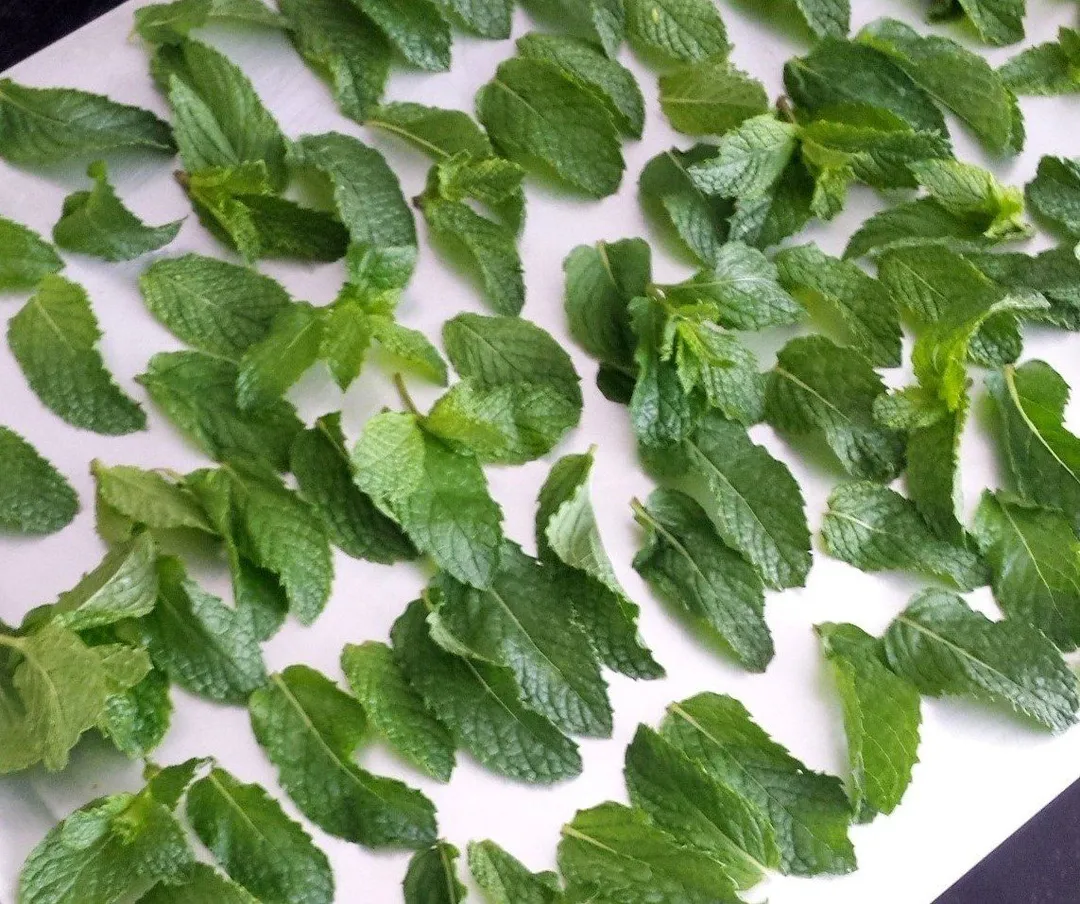
Set the temperature at 105°F.
Drying time will vary significantly depending on the humidity level in your home. So, set the timer for 4 to 5 hours, but check on the leaves after 2 hours. After that point, inspect the mint once every 20 minutes.
Take them out once they’re adequately dried. Store the product in a glass jar.
Can I Dry Anything Else With This Method?
Like we mentioned earlier, the food dehydrator is a universal drying tool that can handle virtually anything.
Other than mint, you can use it to dry dill and multiple other kinds of herbs, fruits, and vegetables. Notably, the food dehydrator is highly recommended for drying mushrooms. Its gentle and stable heating action ensures that the mushrooms won’t get scorched.
Conclusion
Now that you know how to dry mint leaves at home, it will be much easier for you to stockpile this awesome herb. Drying mint isn’t very difficult. All you need is the right tool and some time. We hope this guide has been helpful to you!
If you have some time to spare and is up for some more reading, here are a couple drying guides you can check out:
- How to Dry Orange Slices: orange slices are useful as a healthy snack, a cocktail garnish, or as a baking ingredient. This guide contains everything you need to know in order to dry orange at home.
- How to Dry Cranberries: similar to orange slices, dried cranberries are excellent as a snack. It’s also often used in baking and confectioneries. If you’re interested, you can find the best methods to dry cranberries here.
Authors
Luna Regina is an accomplished writer and author who dedicates her career to empowering home cooks and making cooking effortless for everyone. She is the founder of HealthyKitchen101.com and HealthyRecipes101.com, where she works with her team to develop easy, nutritious recipes and help aspiring cooks choose the right kitchen appliances.

